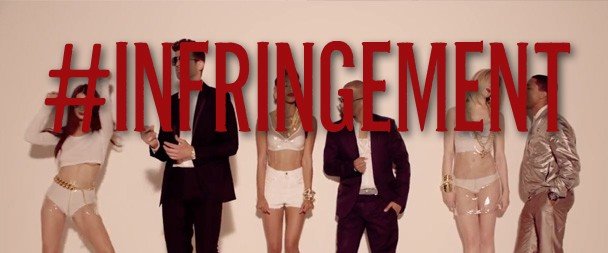 Like many entertainment and IP attorneys, I’ve closely watched the copyright infringement case between the Estate of Marvin Gaye and Robin Thicke/Pharrell Williams over the song “Blurred Lines”. While most copyright cases end up being settled out of court, this case is likely to continue in the court system for a while.
Like many entertainment and IP attorneys, I’ve closely watched the copyright infringement case between the Estate of Marvin Gaye and Robin Thicke/Pharrell Williams over the song “Blurred Lines”. While most copyright cases end up being settled out of court, this case is likely to continue in the court system for a while.
Both sides made interesting arguments and the court has taking on issues that may alter how copyright law has previously been interpreted. I am happy for the Estate of Marvin Gaye, but I have a feeling though they have won, that the case will be appealed.
The current case began February 17th, 2015, though the legal issues began shortly after the Robin Thicke single “Blurred Lines” was released in 2013, with an interesting move by Thicke/Williams to sue the Estate of Marvin Gaye, to obtain a judgment stating that there was no infringement….kind of a pre-emptive strike.
Traditionally, a successful copyright infringement claim requires three things to proven. First, the claimant must prove that they own the rights to a registered copyright that is still under Federal protection, which in this case the Estate of Marvin Gaye does hold a valid copyright to Marvin Gaye’s classic 1977 hit “Got To Give It Up”.
Second, the claimant must prove that the defendent had “access” to the original work. In this case, both Thicke and Williams have acknowledged publicly that they were familiar with the original song….and how could they not be…Gaye’s hit was on the charts for months, was #1 for 5 weeks and has been featured in many successful films, including “Menace II Society” (1993), “Boogie Nights” (1997), “Practical Magic” (1998) and several more since.
The third and most important element is that the claimant must prove that there is a “Substantial similarity to the original, protected elements” between that of the alleged infringing work and that of the original work. In my opinion, in this case it boiled down to how the jury interpreted what is considered “original, protected elements”. The media reported that the jury did NOT compare the two recordings back to back, but rather compared stripped down versions of the songs to compare chord-structure, rhythm, melody…..basically, those elements that would be documented of “fixed” in the sheet music. Though several public musicologists testified to the similarities of the melody, bass-lines and chord-progressions, it did not seem that they were identical.
The jury found that there was a substantial similarity, and thus awarded the Estate damages in the amount of $7.3 Million. So, how is this award calculated? It has been reported that the total revenue so far for the song has been in excess of $16 Million dollars. This doesn’t include the $4.3 Million estimated that Pharrell Williams should receive in publishing royalties. The Estate of Marvin Gaye is also hoping to obtain part of the estimated $11 Million anticipated in the tour revenues for which they argue is attributable to the success and promotion of “Blurred Lines”. In addition, because “Got To Give It Up” was never properly licensed, the fee for the license is expected to skyrocket as well, which Thicke/Williams and their respective companies will now need to negotiate.
If there is no future litigation over the “Blurred Lines” issue, the Estate of Marvin Gaye isn’t done pursuing Robin Thicke on legal claims. The children of Marvin Gaye have also commented publicly that they are well aware of the similarity between Thicke’s hit “Love After War” and their father’s song “After The Dance”, so this may just be the beginning.
So, In order for the Estate of Marvin Gaye to successfully win their claim, the jury will need to determine that what is being copied/infringed is the protected elements and “style” of the music. There are several cases, most famously, the George Harrison/Chiffons Case regarding “”He’s So Fine”/”My Sweet Lord” (Bright Tunes Music Corp. v. Harrisongs Music, Ltd./ ABKCO Music, Inc. v. Harrisongs Music, et al) that will serve as precedent as to how the two songs ought to be assessed.

